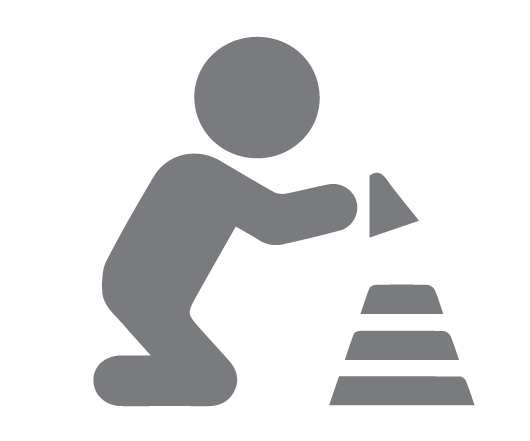Editor’s Summary: This paper delves into the complexities of state intervention in child protection, focusing on defining abuse, determining appropriate actions, and balancing family privacy with child safety. Using the principle of “best interests of the child,” the study explores challenges faced by child protection workers, particularly in marginalized groups. Through a critical review of literature, the paper highlights the need for child-centered, culturally sensitive approaches in child protection, emphasizing prevention and protection while respecting family autonomy.
State Intervention in Child Protection: Balancing Rights and Responsibilities
Abstract
This paper examines the complex issues surrounding state intervention in child protection, focusing on the challenges of defining abuse, determining appropriate intervention, and balancing family privacy with child safety. It explores the concept of “best interests of the child” and its application in child protection practices, particularly for marginalized groups. The study also analyzes the dilemmas faced by child protection workers in implementing these policies. The findings suggest a need for more child-centered, culturally sensitive approaches that balance prevention and protection while respecting family autonomy.
1. Introduction
Child protection policies and practices are fraught with complexities, balancing the need to protect children from harm with respect for family privacy and autonomy. This paper explores the challenges in defining abuse, determining appropriate state intervention, and implementing the principle of “best interests of the child” in child protection practices. It also examines the unique challenges faced by child protection workers in navigating these complex issues.
Research questions include:
- How is child abuse defined, and how does this definition inform state intervention?
- How is the “best interests of the child” principle applied in child protection, particularly for marginalized groups?
- What challenges do child protection workers face in implementing these policies?
2. Methods
This study employs a critical review of literature on child protection policies and practices, focusing on Australian contexts but drawing on international perspectives. It analyzes key policy documents, including the United Nations Convention on the Rights of the Child (CROC), and examines empirical studies on child protection interventions and outcomes.
3. Results and Discussion
3.1 Defining Abuse and State Intervention
Defining child abuse is central to determining appropriate state intervention. Fernandez (2005) suggests that “child abuse is not an absolute concept, and behaviour has to be examined in its context before it is defined as maltreatment” (p. 180). A commonly accepted definition includes physical, emotional, or sexual actions or inactions resulting in significant harm to the child (Australian Institute of Health and Welfare, 1999).
State intervention is often categorized into prevention and protection. While protection interventions are more straightforward when abuse has occurred, preventive interventions can be more complex, especially when families are unwilling to cooperate. This highlights the tension between family privacy and state monitoring, particularly in preventive measures (Fernandez, 2005).
3.2 Best Interests of the Child
The “best interests of the child” principle, derived from CROC, underpins child protection practices in many countries, including Australia. However, implementing this principle is challenging, particularly for marginalized groups such as children with disabilities or refugee children.
Rogers and Wrightsman (as cited in Fernandez, 2005) identify two orientations in determining a child’s best interests: the ‘nurturance orientation’ (adult-centered approach) and the ‘self-determination orientation’ (child-centered approach). Recent shifts towards more child-centered approaches emphasize children’s right to participate in decisions affecting their lives (Mason, 2005).
3.3 Challenges for Child Protection Workers
Child protection workers face numerous challenges in implementing these policies:
- High caseloads and staff turnover, compromising the quality of interventions.
- Safety concerns due to potential violence or threats from clients.
- Balancing departmental targets with the need for thorough case management.
- Navigating cultural differences, particularly when working with refugee families or those from diverse cultural backgrounds.
- Addressing the unique needs of marginalized groups, such as children with disabilities.
These challenges are exacerbated by what Tucci et al. (1998) describe as the “closed systems” nature of child protection services, often isolated from the communities they serve.
4. Conclusion
State intervention in child protection involves complex balancing acts between child safety, family privacy, and cultural sensitivity. The implementation of the “best interests of the child” principle requires careful consideration of each child’s unique circumstances, particularly for marginalized groups.
To address these challenges, child protection practices should:
- Adopt more child-centered, participatory approaches that involve children in decision-making processes.
- Develop culturally sensitive interventions that respect diverse family structures and child-rearing practices.
- Improve support and resources for child protection workers to manage high caseloads and workplace stressors.
- Foster greater collaboration between child protection services and the communities they serve.
Future research should focus on evaluating the effectiveness of preventive interventions and exploring innovative approaches to balancing family autonomy with child protection. Additionally, more studies are needed on the long-term outcomes of different types of state interventions in child protection cases.
Work Cited:
1.Australian Institute of Health and Welfare. (1999). Comparability of Child Protection Data. Canberra: AIHW.
2.Fernandez, E. (2005). Child Maltreatment and Child Protection. In M. Alston & J. McKinnon (Eds.), Social Work Fields of Practice (2nd ed.). South Melbourne: University of Oxford Press.
3.Mason, J. (2005). Child Protection Policy and the Construction of Childhood. In J. Mason & T. Fattore (Eds.), Children Taken Seriously: Contemporary Theory, Policy and Practice. London: Jessica Kingsley Publishers.
4.Tucci, J., Goddard, C., Saunders, B., & Stanley, J. (1998). Agenda for Change: Solutions to Problems in Australian Child Protection Systems. Melbourne: Australians Against Child Abuse & Child Abuse and Family Violence Research Unit.
5.United Nations Convention on the Rights of the Child (CROC). (1989). Retrieved from https://www.unicef.org/child-rights-convention/convention-text
